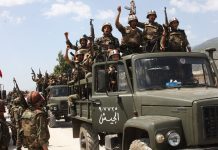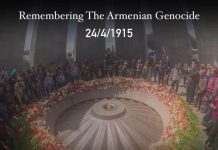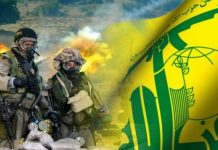The ghosts of Hangar 12/ شبح العنبر رقم 12 في انفجار مرفأ بيروت
L’Orient Today / By Christophe Boltanski, 03 August 2023
Christophe Boltanski wades through the tangle of facts and lies to try and assemble the puzzle.
The Beirut Port Blast of Aug. 4, 2020 killed more than 200 people and injured thousands. To this day, it is still unclear who imported the ammonium nitrate to the port, and why. With the official investigation stalled, a series of suspicious assassinations has fostered doubts about the cause of the catastrophe.
For want of something better, the highway that spans the port of Beirut serves as a memorial to the families of the dead. Surrounded by crude drawings and angry slogans, photos of the victims of the fireball that devastated part of the city on Aug. 4, 2020 line the side of the bridge. This highway, perpetually jammed with traffic, is hardly a place for contemplation, but from its vantage point everything is in plain view: the heaps of torn metal, burned-out cars, boats on their side, twisted pulleys, the skeletal towers of the grain silo, and, where the dock should be, a huge crater awash with muddy water. In the distance one can even see the pier next to which the Rhosus sank, omen of the disaster to come.
A mosaic shattered into a thousand pieces. An enigma. This is what Beirut’s port looks like: a time-frozen field of ruins, the visual replica of a paralyzed justice system. The inquiry is stalled because of the diverse proceedings brought against Tarek Bitar, the judge in charge of the investigation. Three years further on, one of history’s largest non-nuclear explosions remains unexplained: 235 deaths, more than 6,500 injured, 77,000 apartments destroyed, and zero results. No trial to date, not even one accomplice behind bars. A new unpunished crime in a country that has seen so many others.
“In this affair, things are never what they seem. It all requires investigations which are extremely complicated and dangerous.”
Journalists, lawyers, activists are trying to break down this wall of silence. They want to understand how a cargo of explosives could arrive in Beirut and then be left abandoned in a hangar for six long years, before detonating in a blinding shaft of light. To achieve their purpose, they must unravel an incredible tangle of false names, shell companies, fraud and lies. “It’s a lifetime worksite” comments Zena Wakim, a lawyer with the foundation Accountability Now, which works against impunity in Lebanon. “In this affair, things are never what they seem. It all requires investigations which are extremely complicated and dangerous.”
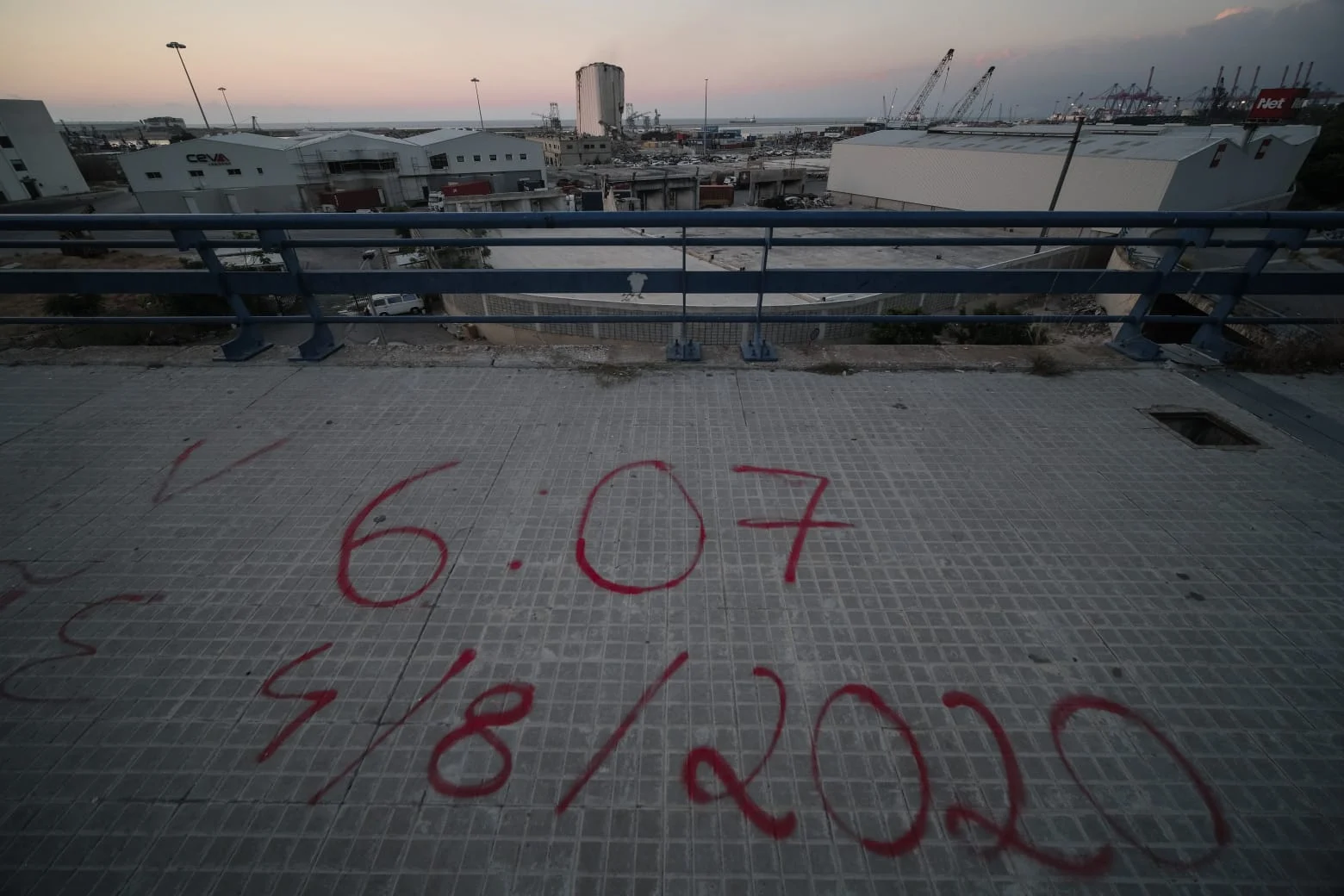 A view of the Beirut port . On the sidewalk, the date and time of the Aug,4, 2020 are written in red. (Credit Photo: Joao Sousa/ L’Orient Today)
A view of the Beirut port . On the sidewalk, the date and time of the Aug,4, 2020 are written in red. (Credit Photo: Joao Sousa/ L’Orient Today)
From the start, one man proposed a method for not getting lost in this tentacular case. “What we have here is a jigsaw puzzle,” explained Lokman Slim, during an interview on Arabic television. This Lebanese intellectual, publisher, archivist, translator and documentarist is remembered for his free-speaking, secular, rigorous, sometimes forceful style. His idea was to examine the total picture, and not the sum of different elements, because a single piece, examined on its own, signifies nothing. Once the sides of the puzzle have been assembled, the large volumes defined and certain details brought to light, a whole other picture appears. While the Lebanese authorities would only concede a series of omissions, Lokman Slim denounced a “war crime” committed by Russia, Syria and Hezbollah. Twenty days later he was found shot to death in his car.
His body lies at rest in his garden, in front of the family house in southern Beirut. To reach his grave, one must get through a roadblock, then a second, then a maze of narrow streets decked in yellow, the color of Hezbollah. On the walls of the gray, high-rise buildings there are faded portraits of “martyrs” in combat gear. In the midst of this chaos of concrete and warlike images, the Villa Slim is an oasis. The front door is open, as always. The son of an eminent Shiite lawyer, Lokman Slim lived among his own in the district of Haret Hreik, now the stronghold of a political-military movement that he relentlessly challenged.
Surrounded by her husband’s countless books and files, the German-Lebanese filmmaker Monika Borgmann is fighting to know the truth: “His interview caused a stir. He was just presenting facts in a very logical way. Naturally people told him: ‘You’re going too far.’ But he had given so many interviews on sensitive subjects.” Lokman’s sister, Rasha al-Ameer, who with her brother created the publishing house Dar al-Jadeed, has similar doubts: “He was obstinate. It was David against Goliath. I used to tell him: ‘They have rockets but what do you have?’” She sighs. “This interview was maybe the last straw, but they had plenty of other reasons to kill him.”
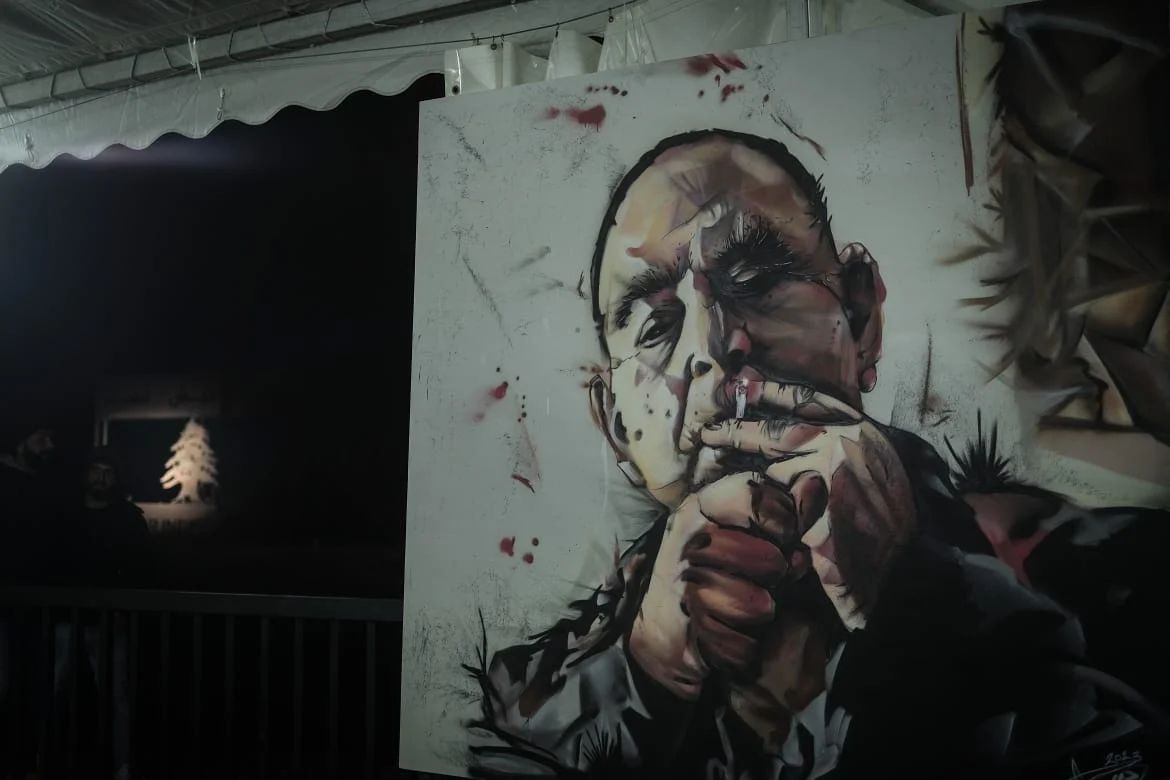 A drawing of Lokman Slim by Said Mahmoud. (Credit Photo: Joao Sousa/ L’Orient Today)
A drawing of Lokman Slim by Said Mahmoud. (Credit Photo: Joao Sousa/ L’Orient Today)
Slim’s is not an isolated case. Like the aftershocks that follow an earthquake, major crimes in Lebanon always give rise to others. In the aftermath of the explosion, several assassinations shocked the city. Homicides that were never solved, always perpetrated by professionals and followed by botched investigations, too quickly suspended for an alleged lack of leads and suspects.
At first glance, the victims have nothing in common, except that they are all linked to the port of Beirut. Why were they murdered? Was it because of information they had or the post that they occupied? Did they threaten to break the law of silence? Would their testimonies have helped reconstitute the pieces of the puzzle? Their friends and families have agreed to speak, some for the first time, most of them remaining anonymous and obviously scared. “Be diplomatic,” one of them whispered, “because our lives are at risk.”
Before telling their story, it will be useful to examine another suspicious death, the death of a customs officer that occurred before the catastrophe.
In Beirut port, colonel Joseph Skaf headed the anti-illegal migration and money laundering division. On Feb. 21, 2014 he alerted his seniors to the “public security” risk posed by a vessel, the Rhosus, docked for the last three months, because it was carrying ammonium nitrate, “a highly dangerous and explosive material.” In a handwritten letter, he advised that it should be moved away from the pier to the breakwater and put under surveillance. “Before him, no-one had mentioned the presence of nitrate in the port,” said one of Lebanon’s most eminent investigative journalists, Riad al-Qobeissi of the Jadeed-TV channel. The customs officer suspected fraud. He found it strange to moor a cargo for such a long time at that location. That is why he asked for it to be moved away.
Depending on its nitrogen content, ammonium nitrate has various uses: below a threshold of 33.5 percent, it is a widely used fertilizer. Above this, it is used to make explosives. With a content of 34.7 percent, the white powder packed into the hold of the Rhosus is used to make bombs.
Who owned the Rhosus ? How did it get there? According to a first version based on the testimony of its captain, it was acquired by a Russian businessman, Igor Grechushkin, convicted of aggravated theft and without naval experience. The vessel left Batoumi, on the Black Sea, on Sept. 27, 2013 heading for the port of Beira in Mozambique, with a cargo of 2,750 tons of ammonium nitrate produced by the Georgian chemical plant Rustavi Azot, the end client being a private firm, the Fabrica de Explosivos de Moçambique. In heavy debt, the shipowner diverted the vessel to Beirut in order to load a second cargo and thus have the necessary funds for its passage through the Suez Canal. But the seismic survey machines that the Rhosus was to take on board were too heavy. During loading on Nov. 25, they damaged a hatch cover. The port authorities declared the vessel unfit for navigation and immobilized it, later ordering its seizure after complaints of unpaid claims. Greshushkin took this opportunity to disappear. This account, widely repeated, is full of lies.
After being transferred to airport customs operations, colonel Skaf let the matter rest. His letter was never answered. Stuck in a drawer somewhere, it never even reached some of those it was addressed to. If this officer had not been transferred somewhere else, could he have prevented the catastrophe? “We will refuse to let them unload this cargo,” he told his brother.
The catastrophe should never have happened. As in other countries, Lebanese law forbids materials for military use entering its territory without a special permit. Depending on its nitrogen content, ammonium nitrate has various uses: below a threshold of 33.5 percent, it is a widely used fertilizer. Above this, it is used to make explosives. With a content of 34.7 percent, the white powder packed into the hold of the Rhosus is used to make bombs.
On the first documents — the unified list and arrival statement — sent to customs and the port authority, this was not mentioned. The mails exchanged between the various departments did not define the nature of the merchandise. The authorities only seemed to be concerned by the unloading process because the vessel was at risk of sinking. On June 27, 2014 a summary judgment judge ordered the cargo to be stored in a “safe place.” He also had no idea what was in it. “In its request, the Ministry of Public Works and Transportation mentions a ‘dangerous substance’ which might pollute port waters. Why does it not mention ammonium nitrate?” asks Riad al-Qobeissi. At the time, the holder of this coveted, and very lucrative, portfolio was Ghazi Zeaiter, a leader of the Shia party Amal, Hezbollah’s ally.
The vessel’s contents were unloaded on the sly during the night of Oct. 22-23, 2014 and stacked in Hangar no. 12, reserved for dangerous materials, and then forgotten.
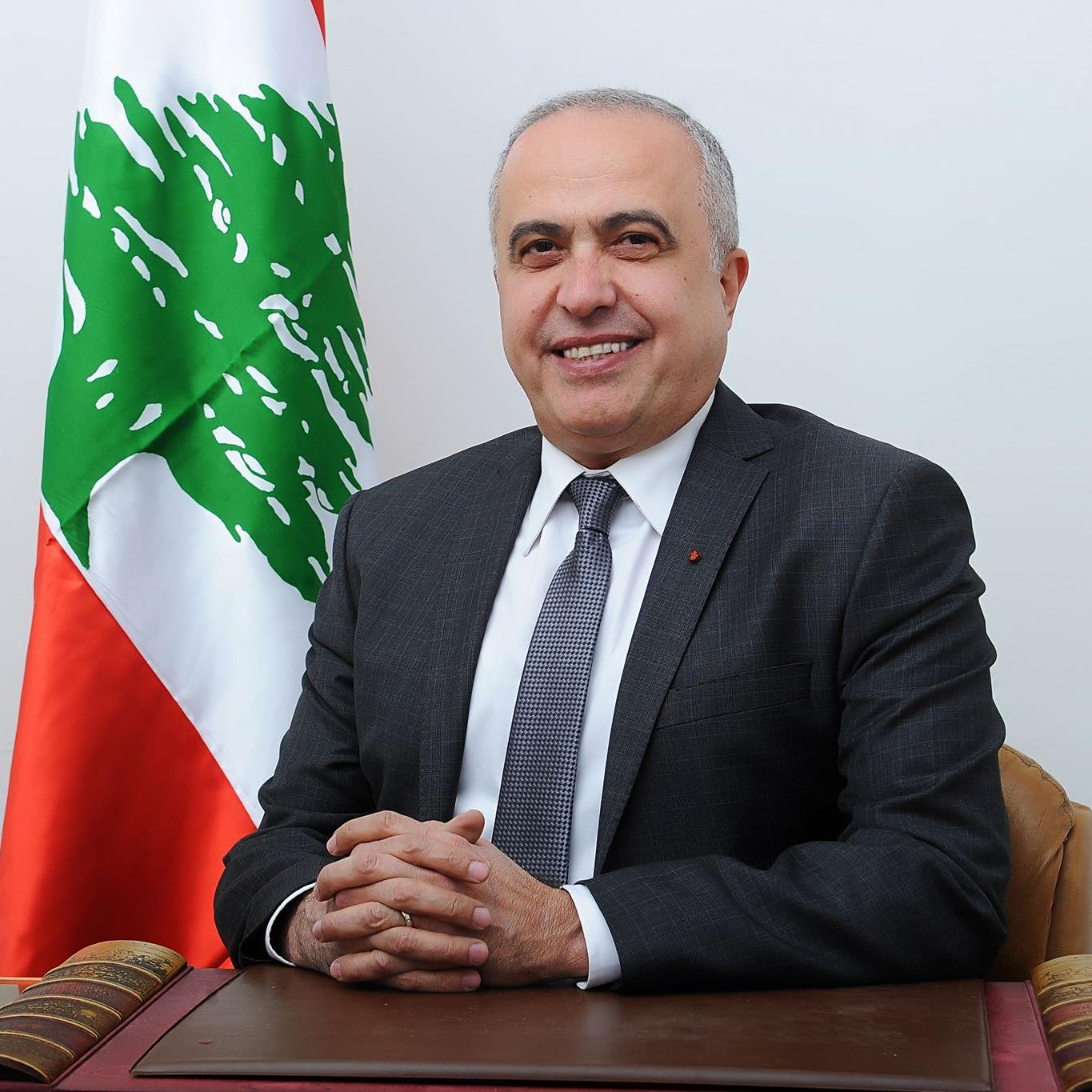 Colonel Joseph Skaff. Photo taken from his Facebook account
Colonel Joseph Skaff. Photo taken from his Facebook account
Two years later Joseph Skaf, now aged 56, retired and ran for office in parliamentary election on an independent ticket. On March 4, 2017 he attended a campaign dinner. At 3 a.m. he had still not returned to his apartment in the north of Beirut. His wife failed to reach him by phone. She was worried. A friend went to look for him and found his Range Rover at the foot of his building, headlights on, the trunk open. He shouted “Joseph” and saw his body 1.8 meters away, stretched out, arms crossed, on the ramp going down to the underground carpark. His skull was crushed, his eye swollen, his hands and knees covered in bruises and a rib broken, as if he’d been in a fight. The autopsy found no internal cause that would explain his fall. No heart attack, no stroke, no alcohol in the blood. A medical report attributed his death to a cerebral hemorrhage, with no other details. The police called it an accident.
“They did not protect the scene of the crime and questioned no one. They wanted to close the case as quickly as possible,” said one of his close friends. A forensic medical expert appointed by the family came to a very different verdict. According to him, Skaf “was the victim of a brutal attack.” He was struck in the eye and below the rib cage before being pushed from a great height.
A customs officer will always have enemies, especially at Beirut port, nicknamed “the cave of Ali Baba and the 40 thieves.” This outgrowth in the heart of the city is a concentrate of the shortfalls in the Lebanese system. It’s the kingdom of fraud, bribery, the mafia, scandal after scandal. Forced to act after so many empty promises, in 2019 president Michel Aoun created an anti-corruption bureau in the heart of the port zone and entrusted it to State Security, one of the country’s four intelligence services.
“My mission was to gather information on every form of misappropriation. We started from scratch, with few resources or staff,” recalls its chief, captain Joseph Naddaf. He now works in a newly renovated building near the container terminal. His old offices, next to the silos, were destroyed. Civilian security agents armed with assault weapons ensure his protection. Aged 35, dressed in jeans and a polo shirt, he is the whistle-blower in this story. His warnings, instead of being heeded, tripped off a devastating chain reaction.
Towards the end of 2019, a “source” informed him of the presence of ammonium nitrate in Hangar 12. His investigation didn’t get far. “I didn’t know what it was. I had to ask experts, and it was the beginning of Covid.” When he visited the hangar, he was surprised to see there was no watchman there. “One of the rear doors of the warehouse had been forced open. Right next to it, there was a hole in the wall fifty centimeters in diameter. I could see bags piled in great disorder. Anyone could have taken them.” Staying outside, he just took photographs of the ripped, half-empty bags. “I was not authorized to enter. Only customs and the port authority had access. My role was just to make a report.” He wrote five. In the report delivered to the prosecutor’s office on June 1 2020, he reiterated the facts, with the warning: “Ammonium nitrate, in case of fire, would cause a huge explosion with disastrous consequences for Beirut’s port. We fear that this material could be stolen and used to make explosives.”
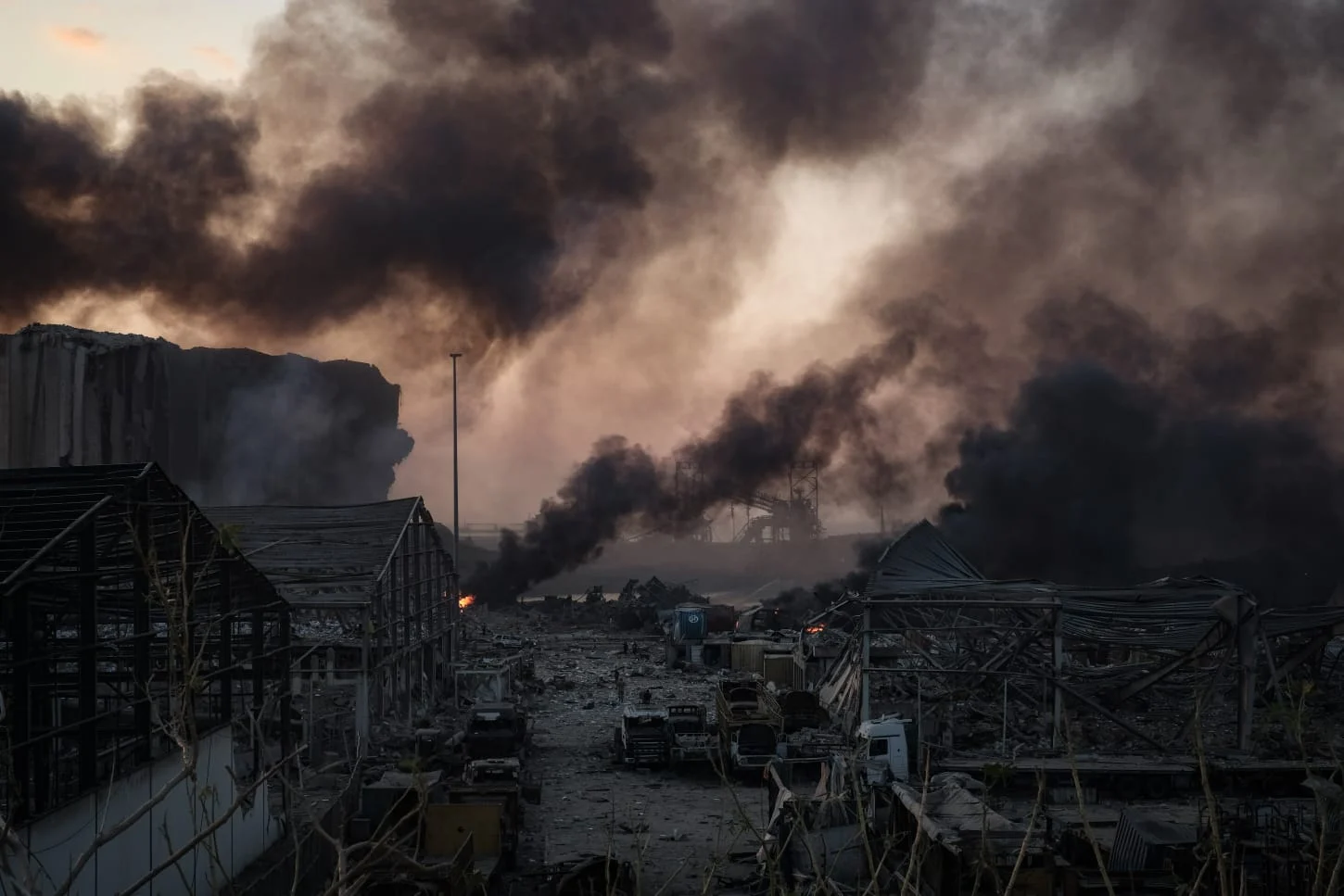 Inside Beirut port on Aug.4, 2020. (Credit photo: Joao Sousa/ L’Orient Today)
Inside Beirut port on Aug.4, 2020. (Credit photo: Joao Sousa/ L’Orient Today)
His report started making the rounds and threatened to be leaked in the media. On July 20, State Security sent a summary of it to President Aoun and Prime Minister Hassan Diab. A risk of theft and explosion? Once the matter had been referred, general prosecutor Ghassan Oueidat could have demanded that the bags be transferred to a secure location, or even that they should be counted to make sure none was missing. He simply asked for repairs to be made. On August 4, around 4 pm, three workmen from an outside company soldered the damaged door without knowing what was behind it. The port employee who should have supervised the work was not there. After their departure, at 5:54, a witness posted a video on Twitter showing thick, black smoke clouds billowing over the hangar. The fire service arrived on site four minutes later. A first explosion shook the air at approximately 6:07, followed thirteen seconds later by an even more powerful one.
The next day, while stunned residents combed the ruins, the famous letter from Joseph Skaf reappeared online. His friends and family were stupefied to discover its existence. “He had never spoken about it to us, but it was definitely his handwriting,” said one of them. They didn’t know who had published his message from the grave, nor why it had been divulged at this precise time. It added more fire to their doubts. One of his sons, Michel, until then silent, tweeted on Aug. 8: “A crime was committed in March 2017. My father did not slip or fall. He was brutally attacked and assassinated in front of his home.”
Another case rekindled their suspicions. Once again it concerned a customs official, an ex-colonel. Having retired early, Mounir Abou Rjeily was building himself a second residence in Qartaba, a mountain village above Byblos. On Dec. 1, 2020 he went up there to see how the work was progressing. Because of a thick mist, he decided to sleep on site. In the morning, his cell phone was not answering. Worried out of her mind, his wife, Maguy, drove there and found him in pajamas on his bed, lying in a pool of blood. His teeth had been ripped out, his skull fractured. “There had to be at least three assailants,” said Simon Karam, the family’s lawyer. One of them beat him to death with a club, while the others held his shoulders. No prints, no signs of a break-in, no signal from an unknown phone in the vicinity. That specific day the neighbor was absent. It was a professional job.
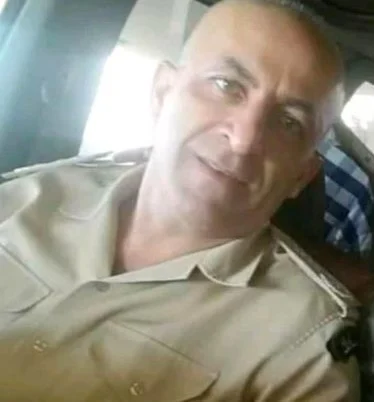 Mounir Abou Rjeily. Photo taken from his social media accounts
Mounir Abou Rjeily. Photo taken from his social media accounts
The judge opted for a presumed burglary that went wrong. After turning the villa upside down, the attackers left with a flat screen. Lawyer Karam denounced a decoy: “They didn’t touch the safe containing money and jewelry.” So what was the motive? “Our police force is very efficient,” he said. “In the case of organized crime, they quickly arrest the guilty. If it’s political, they never find them.”
When Maguy found her husband’s lifeless body, her first call was to the widow of Joseph Skaf: “They have killed Mounir, like Joseph!” she cried. The two men were friends. They both worked at the port. Shocked by the brutal death of his colleague, Mounir Abou Rjeily went into retirement five months later. Aged only 50. Did he know Joseph’s letter existed? “Of course,” said a friend. He brought his fingers together, pretended to write, staring in front of him, as if making imaginary signs in the air. “They wrote it together,” he murmured.
A cycle of violence began that recalled the wave of killings perpetrated in 2005 after the assassination of former Prime Minister Rafik Hariri. The victims were personalities on the political or media scene. This time it was about ordinary people.
On Dec. 21, 2020 at 7 a.m. precisely, Joe Bejjani leaves his house. Every morning the same ritual: he turns on the heating in his GMC and waits for it to warm up to fetch his two daughters, then he drops them off at the kindergarten and drives to his office. He is 36 and works for the telecoms company Alfa. Built on the mountainside on the fringe of the Kahaleh township, his house overlooks Beirut. As is often the case in Lebanon, it is equipped with a video surveillance system. Just after the crime, the police viewed the images on site. Someone recorded the sequence with a mobile and posted it on Facebook. We see Joe get into his car. Ten seconds later, a man in a black woolen cap runs to catch up with the car, holding a pistol with a silencer. He opens the car door and fires four shots. An accomplice wearing a motorcycle helmet comes behind him carrying a sort of toolbox. He dives into the car, searches the body, snatches the victim’s mobile and slams the door. The two killers take off down rugged terrain, usually covered by scrub, which has since conveniently burned on two occasions. A motorcycle is waiting for them fifty meters below.
They barely take the trouble to disguise themselves. The first man is wearing an anti-Covid mask over his mouth, the second a helmet without a visor. Yet they know they are operating in the most scrutinized zone in the country. When they get down from the village, they go past the presidential palace, the ministry of defense, military barracks. “The police know their faces, their itinerary yet couldn’t identify them or find any details that would explain things. How is this possible?” asks Youssef Lahoud, the Bejjanis’ lawyer. The cameras lose all trace at the edge of the southern suburb.
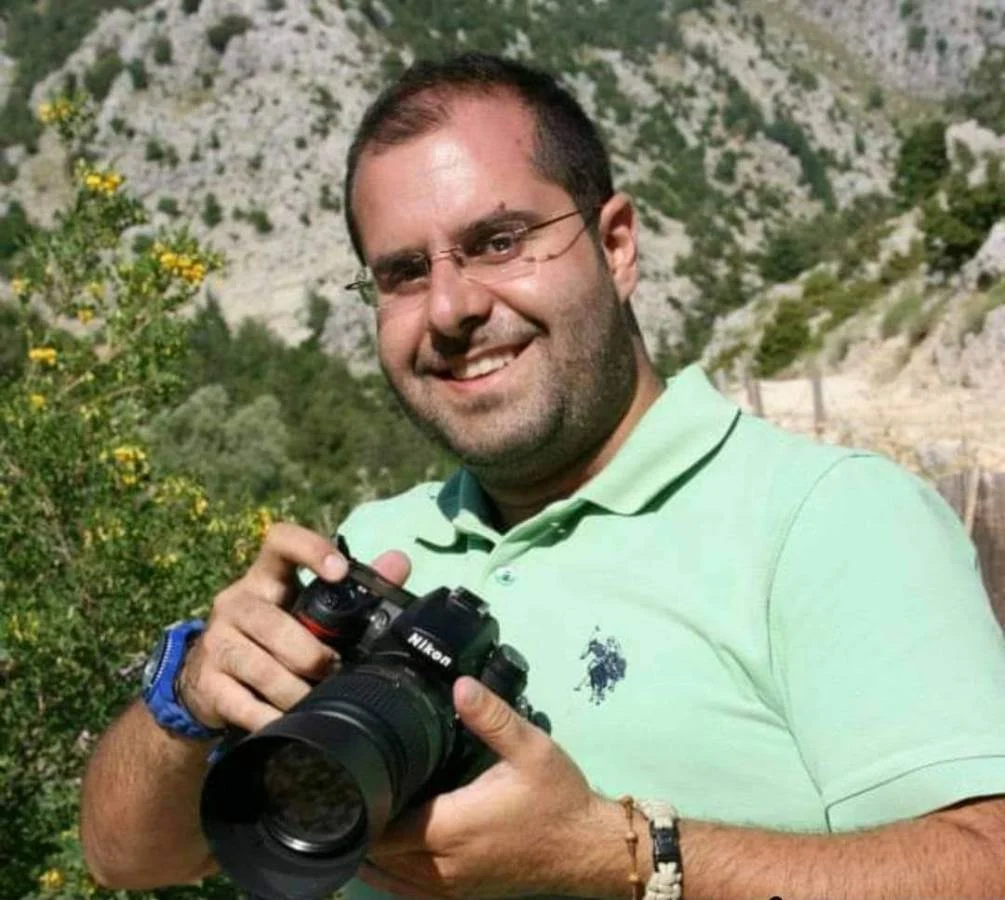 Joe Bejjani. Photo taken from his Twitter account
Joe Bejjani. Photo taken from his Twitter account
“Who is Joe?” Amal, his mother, fights back her tears as she repeats the question, as if sharing it. Why take up against her son? He had no enemies. He was not in politics. One thing makes him stand out: “Since he was a boy, he loved everything to do with the army.” He spent his spare time photographing soldiers and tanks. He was on good terms with the Lebanese army who issued him a press card. In exchange, he gave them prints free of charge. Did he see something he shouldn’t have? On Aug. 14, 2020 he posted an image on his Twitter account that was widely shared: “In the background you can see the grain silos and Hangar 12 where the explosion occurred,” he wrote.
“When he posted that photo it got a lot of attention,” remembers Bejjani’s wife Nayla. “He took it in 2017, during a delivery of American tanks to the Lebanese army.” Were there other photos in the archive? “He often went to the port during military events. When he was in a zone that was closed to the public, he often took the opportunity to photograph other things.” That is all she knows. The police took away his cameras, computers, his USB key and the surveillance cameras. “They gave them back to us two weeks later. They were all empty.”
After a year of fruitless inquiry, Nayla Bejjani broke her silence and started giving interviews. “I was accusing everyone.”
The minister of the interior summoned her: “Take care,” he warned her. “Your daughters have already lost their father. I can’t protect you.” She now lives in France with her children and has refugee status. After the explosion, she recalls her husband’s fury. “He was very angry. He would say to me: ‘Lebanon is finished. We have to leave’.” On August 18 he posted a quotation from George Orwell: “The further a society drifts from the truth, the more it will hate those who speak it.” A bit later, he announced he was no longer going to work with the army. Several countries, including France and the United States, were at the time conducting investigations on site. “He wanted to help them.” How? Did he even do it? She does not know.
Will Judge Bitar manage to solve the mystery of what happened at the port? He has just a computer and two clerks at his disposal to unravel one of the most complex affairs in the country’s history. Those who stand to lose from his investigation are waging a full-blown war against him. He is the target of hate campaigns and there have been more than 40 demands that he recuse himself. Each time he resumes his investigation, yet another appeal stops it dead. If he looks to his peers for support, they find procedural obstacles springing up in their way. If he issues an arrest warrant, the police refuse to execute it. Having indicted the attorney general, Ghassan Oueidat, Oueidat sued him in turn for “abuse of power” and in the process, ordered the release of the 17 people still being held in prison.
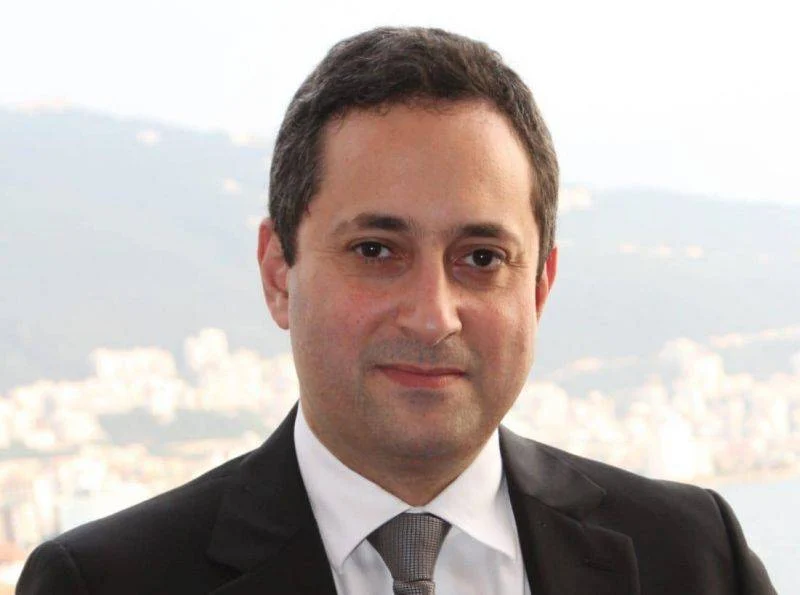 Tarek Bitar
Tarek Bitar
“It’s maddening!” complains Paul Naggear. He and his wife Tracy have just attended a demonstration outside the courthouse as they do every month, alongside the parents of other victims. “There were around 30 of us. Why so few? People have given up hope.” They live at the top of a glass-fronted building opposite the silos. They lost their three-year-old daughter, Alexandra, on August 4 when the plate glass window in their lounge shattered. They didn’t expect much from the inquiry. “We knew it wouldn’t go anywhere.” They are calling for an inquiry led by the United Nations Human Rights Council. “What we want is to establish the facts.” So many of their questions have gone unanswered. Like many of Beirut’s inhabitants, Tracy is convinced she heard a plane before their world was turned upside down. She suspects a missile strike. “That’s the Israeli hypothesis,” says Paul.
“The fact that the explosions were preceded by a fire means that a missile or explosive device can be ruled out as the cause of the detonation: either would have resulted in an immediate explosion rather than a fire.”
French experts have discounted this line of inquiry. On Aug. 6, 2020 15 police forensics officers were dispatched to Beirut in connection with a manslaughter investigation opened in Paris (there were three French nationals among the deceased). They spent a week taking samples in and around the crater. Their report states that they were “working on the basis that a fire broke out at about 5.30 p.m. in the northern part of warehouse 12.” They tend to think it was an accident, but do not rule out criminal conduct. “We cannot make any assumptions about how the fire started.” They cite welding, an electrical fault, a cigarette butt or a malicious act (splashing flammable fluids around or setting fire to rubbish) as possible triggers. By contrast, “the fact that the explosions were preceded by a fire means that a missile or explosive device can be ruled out as the cause of the detonation: either would have resulted in an immediate explosion rather than a fire.”
The FBI also sent specialists from the US. They concluded that just 550 tonnes of ammonium nitrate exploded on August 4. So what happened to the other 2,200 tons? It is possible that they burned up. French divers recovered ammonium nitrate blocks from the depths of the harbor. “When you have a deflagration rather than a detonation, the burning material disintegrates more quickly than it explodes. Particles are widely dispersed,” explains Brian Castner, an explosives expert with Amnesty International. Another possibility is that it was stolen. Part of the cargo could have been misappropriated either before or after it arrived in hangar no. 12.
“There are several things that lead me to think that some of it was missing,” says journalist Riad al-Qobeissi. We were told that the goods were unloaded in one night. I did the calculation and that’s impossible! It would have taken at least 48 hours to unload the ship. And you can’t store 2,750 one-ton sacks on this dockside, it’s just not wide enough.”
One of Lebanon’s neighbors used to make ample use of ammonium nitrate but is unable to import it as a result of international sanctions. From 2013 onwards, Syria has had a new weapon at its disposal: the barrel bomb, a rudimentary device developed by the Scientific Studies and Research Center, a Syrian regime ‘laboratory of horrors,’ and made from diesel, scrap metal and a few scoops of ammonium nitrate. Barrel bombs were used the following year, dropped from helicopters to wipe out rebel towns and cities.
While there is no hard proof of Syria’s involvement, there is a body of circumstantial evidence. In August 2020, the OCCRP (Organized Crime and Corruption Reporting Project), a consortium of journalists, revealed that the Rhosus belonged to Cypriot arms dealer Charalambos Manoli and not Grechushkin — he was simply the carrier and his contract had just expired when the ship was diverted to Beirut. At the time of the sailing, Manoli owed $1 million, pledged against his ship, to the Federal Bank of the Middle East (FBME), which was subject to US Treasury sanctions in 2014 for money laundering on behalf of Hezbollah and the Scientific Research and Studies Centre in Damascus.
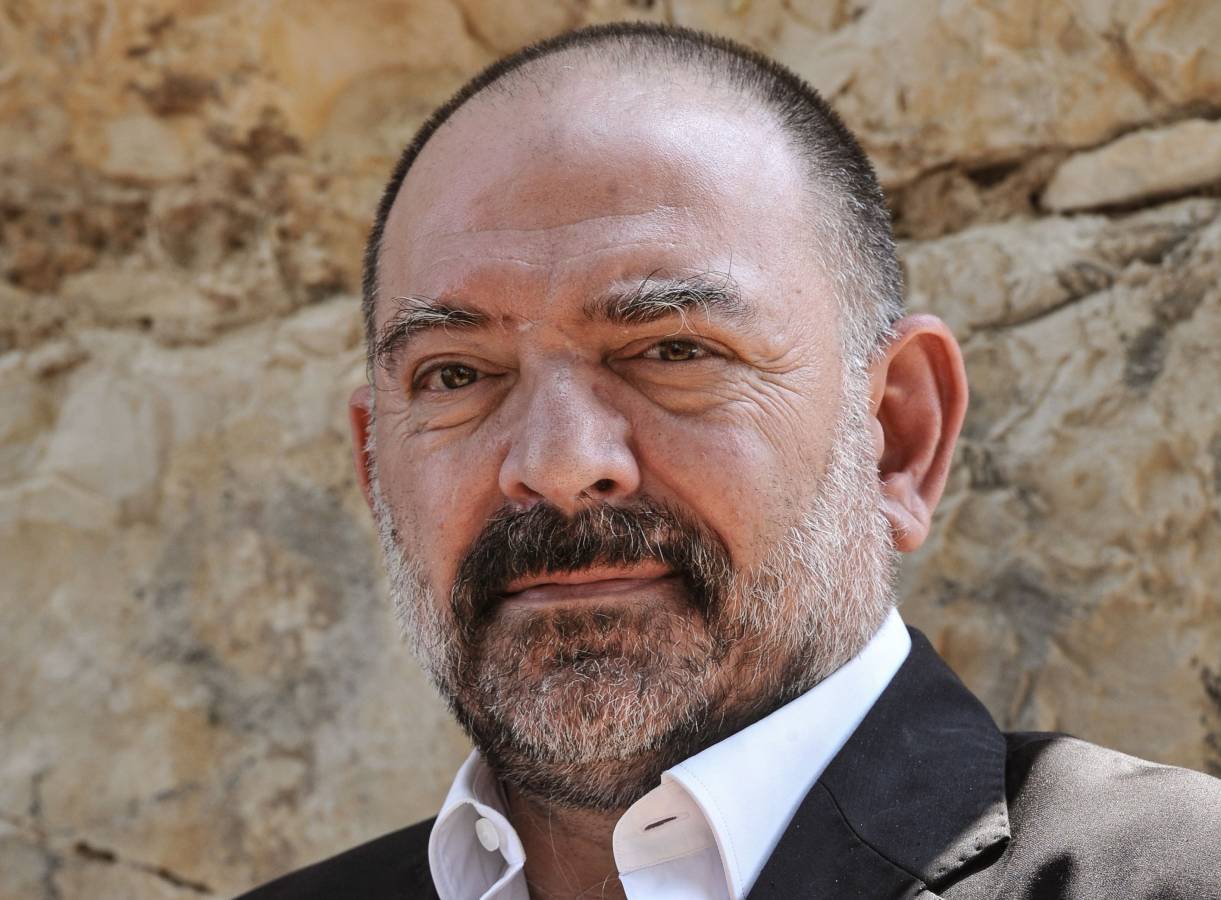 Lokman Slim (Credit Photo : Lokman Slim’s family/AFP)
Lokman Slim (Credit Photo : Lokman Slim’s family/AFP)
Was the Rhosus simply bound for Southern Africa? Given the state it was in, it is unlikely that this floating dump would have been permitted to cross the Suez canal, where strict safety regulations apply. According to Megaphone, a Lebanese online information site, when Grechushkin’s lease expired, the ship could not cross the Mediterranean. As a result, on Nov. 1, 2012 it turned up in Tartous, a Syrian port that is home to a Russian naval base. “It sailed out, empty, five hours later, says Megaphone journalist Jonathan Dagher. What was it carrying? We don’t know.”
The Mozambicans never purchased the ammonium nitrate offloaded in Beirut. The buyer turned out to be a trading company, Savaro, an empty shell company with no assets and a straw (wo)man manager. “When we saw that this company was listed with Companies House in London, we referred the matter to the English courts,” says Nasri Diab, one of the lawyers for the port victims. On Feb. 1 the High Court in London found Savaro liable for damages over the explosion. The plaintiffs are still trying to identify its real owners. In another coincidence, Savaro shares its address at 10 Great Russell Street with engineering companies Hesco and IK Petroleum Industrial; all three companies have been at this location since the same date, June 25, 2011. Hesco and IK Petroleum Industrial belong to Georges Haswani and Imad Khoury respectively, businessmen with dual Syrian-Russian nationality. Both are subject to US sanctions for providing support to Bashar al-Assad’s war machine.
Lokman Slim was one of the first to point a finger at the Syrian regime and its Lebanese ally. On the evening of the blast, he jumped on a motorbike and rushed down to the harbor. He wanted to see, understand and report on what was going on. In the weeks that followed, he conducted an investigation, as he always did. He kept records of the country’s crimes for decades, to try and prevent people from forgetting. During these troubled times, Monika suggested they leave for Germany. He refused. “He wanted to stay here,” she says. “He thought there was a political opportunity to be seized.” He knew he was in danger. In 2019, Hezbollah activists plastered their home with death threats.
On Jan. 15, 2021 during an interview with Saudi’s al-Hadath television, he went even further in his accusations. On Jan. 31 the attacks began on the web. The same messages were posted over and over, calling him an agent in the pay of Israel. “The number of fake profiles and retweets was indicative of a highly orchestrated campaign,” says Nasri Messarra, a social media sociologist. On Feb. 3, Slim went for dinner at a friend’s house in Niha, in southern Lebanon. He was captured on a number of security cameras, which showed five cars tailing him. He was abducted that evening on the outskirts of the village and found at dawn, riddled with bullets, 40km away.
As with the other cases, there were no efforts to protect the crime scene. Onlookers mingled with police officers. Nobody wore gloves. And the investigation ground to a halt. “They only asked me personal questions — whether Lokman had had any clashes at work, if he was homosexual or suicidal — and not one about the threats he’d received,” says Borgman. When his death was announced, Jawad Nasrallah, the son of the leader of Hezbollah, published a tweet that was promptly deleted: “The loss of some is in reality an unexpected gain and kindness to others.” In an open letter written in December 2019 following the attack on his home, Lokman Slim had held the leaders of the two Shi’ite factions, Hassan Nasrallah and Nabi Berri, “fully responsible” for whatever might happen to him.
This investigation was written in French for La Chronique Magazine, an Amnesty International publication.

